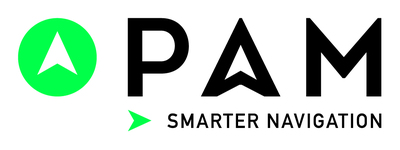Nevada
How smart navigation technology is adding a layer of humanity to cities
LAS VEGAS, July 15, 2021 /PRNewswire/ -- There's a growing push to move from 'smart cities' to 'human cities' cities that enhance the health, happiness and wellbeing of citizens. A new wave of technology companies are adding a layer of humanity to built environments in new and exciting ways, redefining what it means to be 'smart'.
The things that make dense urban environments so great creativity, novelty, diversity are only possible when you bring people together. After a year of lockdowns and a growing loneliness epidemic, face-to-face interactions have never been more important.
To recover from COVID lockdowns, EY believes Central Business Districts must become 'central experience districts'. Respondents to an EY survey in Australia said they want their CBD to be a destination that offers more than just workplaces: "They are looking for a variety of experiences relaxation and dining, fashion and culture. Ultimately, people want their CBD to be a place that meets their essential human desire to connect."
When choosing smart technology vendors, it's important to choose companies that deliver connected, social experiences. MIT's Senseable City Lab warns against choosing smart technologies that result in overly planned built environments: leave room for adaptation and exploration.
Healthy, meaningful places
A new breed software is specifically designed to encourage adaptation and exploration and make cities more 'human': smart navigation technology.
Navigation software helps to create healthy environments where walking is encouraged. Tourist trails and pedestrian routes are clearly signposted, and social bonds are enhanced. Giving pedestrians the power to know the best routes through a city and what to find along the way encourages them to walk and enjoy every element of the city. In conjunction, digital technologies can tell meaningful stories about places, or create two-way dialogues between cities and visitors. When visitors can better understand their environment, and their environment can better understand them, places become more meaningful, pleasurable and loved.
Navigation software also reduces the anxiety of getting lost by directing people away from bottlenecks and towards the safest routes. Tomorrow's 'human cities' will provide a sense of safety, certainty and security by making streets safer and less congested, and guiding people to the safest and best-lit routes.
Making places 'smart' means more than using data and sensors. It's about improving quality of life, and we're seeing a wave of innovation worldwide. When buildings are designed as experiences, supported with human-centric technology, they can bring people together in new and exciting ways.
Change is definitely going to happen. Get prepared by thinking about what a city really is, and how technology can enhance it.
Stephen Minning is Founder and CEO of PAM Wayfinding, an integrated, cloud-based CX navigation platform. PAM's clients range from university campuses to multi-billion dollar entertainment districts in the United States, Australia and Middle East.
More from PAM: pam.co/news
About PAM: smart-city.pam.co
![]() View original content to download multimedia:https://www.prnewswire.com/news-releases/how-smart-navigation-technology-is-adding-a-layer-of-humanity-to-cities-301334149.html
View original content to download multimedia:https://www.prnewswire.com/news-releases/how-smart-navigation-technology-is-adding-a-layer-of-humanity-to-cities-301334149.html
SOURCE Pam Wayfinding

